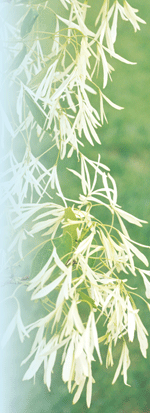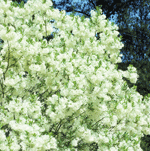Fringe Tree a Natural for Carolina Landscapes
go.ncsu.edu/readext?234371
en Español / em Português
El inglés es el idioma de control de esta página. En la medida en que haya algún conflicto entre la traducción al inglés y la traducción, el inglés prevalece.
Al hacer clic en el enlace de traducción se activa un servicio de traducción gratuito para convertir la página al español. Al igual que con cualquier traducción por Internet, la conversión no es sensible al contexto y puede que no traduzca el texto en su significado original. NC State Extension no garantiza la exactitud del texto traducido. Por favor, tenga en cuenta que algunas aplicaciones y/o servicios pueden no funcionar como se espera cuando se traducen.
Português
Inglês é o idioma de controle desta página. Na medida que haja algum conflito entre o texto original em Inglês e a tradução, o Inglês prevalece.
Ao clicar no link de tradução, um serviço gratuito de tradução será ativado para converter a página para o Português. Como em qualquer tradução pela internet, a conversão não é sensivel ao contexto e pode não ocorrer a tradução para o significado orginal. O serviço de Extensão da Carolina do Norte (NC State Extension) não garante a exatidão do texto traduzido. Por favor, observe que algumas funções ou serviços podem não funcionar como esperado após a tradução.
English
English is the controlling language of this page. To the extent there is any conflict between the English text and the translation, English controls.
Clicking on the translation link activates a free translation service to convert the page to Spanish. As with any Internet translation, the conversion is not context-sensitive and may not translate the text to its original meaning. NC State Extension does not guarantee the accuracy of the translated text. Please note that some applications and/or services may not function as expected when translated.
Collapse ▲
Chionanthus virginicus
JC Raulston Arboretum ©
Native trees are excellent choices for North Carolina landscapes since we know they have survived the stresses of our environment for hundreds of years. Most of us, however, usually want a tree to do more than just survive. We often look for trees that can fit into smaller spaces, have few disease and insect problems and offer a feature that gives them special interest. All of these criteria describe the fringe tree, Chionanthus virginicus. This tree is native to North Carolina with a range from New Jersey to Florida and as far west as Arkansas and Texas. In the wild it grows along streambanks and wetlands.
The fringe tree is considered a large shrub or small tree that can grow to about 20 feet in height and width and maturity. The tree produces dark green glossy leaves in the spring, along with beautiful, slightly fragrant flowers that feature airy, drooping, four- to six-inch-long clusters of fringe-like, creamy white petals. These flowers give the tree its common name as well as other names such as old man’s beard. When in bloom, the entire tree looks like it is glowing due to the soft airy nature of the flowers. The flowers give way to clusters of olive-like fruits that ripen to a dark, bluish black in late summer and are a food source for birds and other wildlife.

Chionanthus virginicus
JC Raulston Arboretum ©
The fringe tree grows easily in moist, fertile, well-drained soil in full sun to partial shade. It may be difficult to transplant specimens once established. It’s best to plant balled-and-burlapped or container-grown plants early in the spring in a well prepared site. The tree seldom needs pruning and is a beautiful specimen shrub. It also does well in groups, borders or near large buildings. Because it is tolerant of air pollution, it can thrive along streets and highways. The slow-growing nature of this tree results in strong, dense wood that is better able to withstand the bending stresses associated with wind and ice storms.
Chionanthus virginicus is an excellent choice for the urban landscape, the native garden, container planting or as a utilitarian tree under power lines.
Carl Matyac


